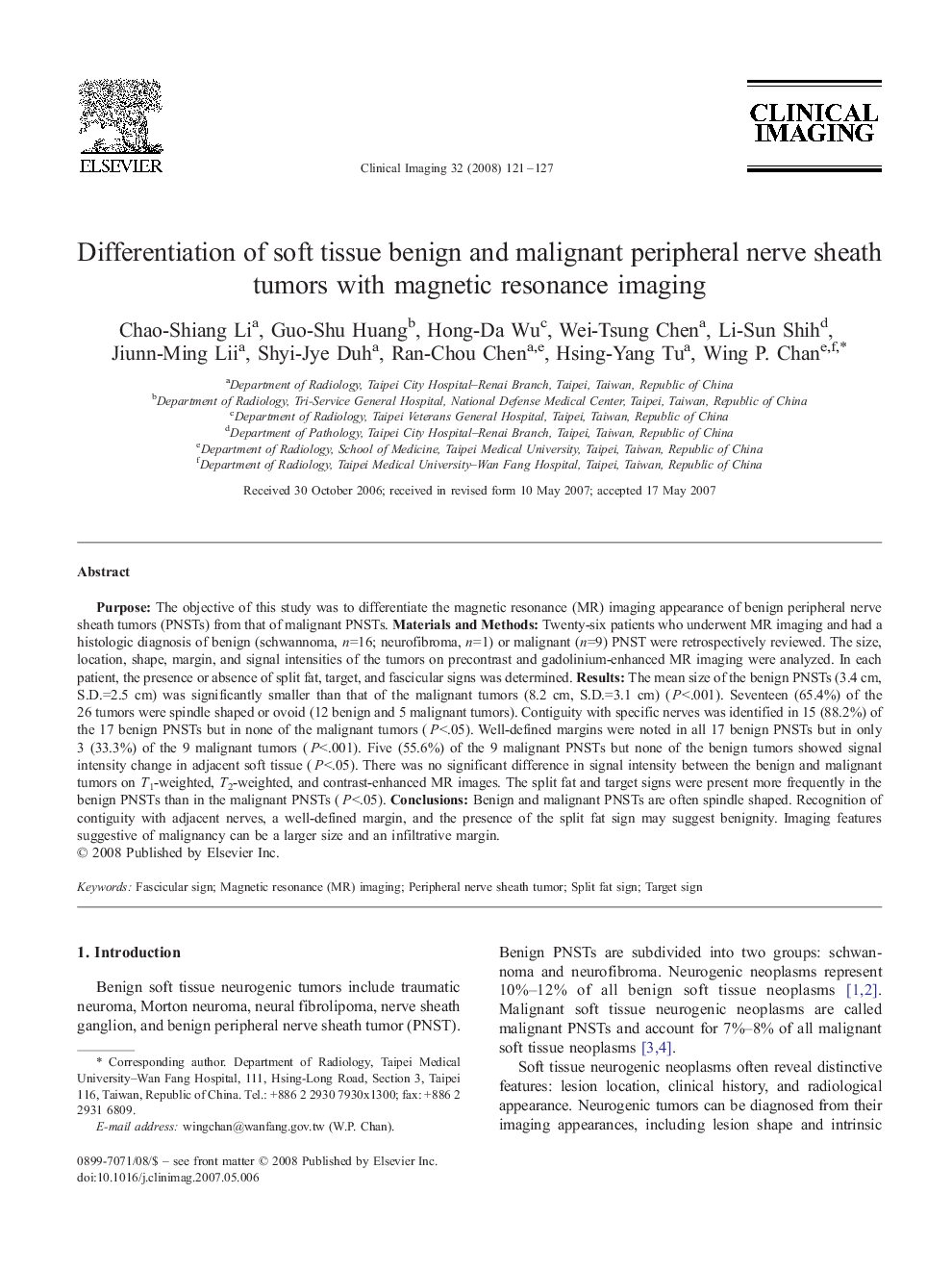| Article ID | Journal | Published Year | Pages | File Type |
|---|---|---|---|---|
| 4222528 | Clinical Imaging | 2008 | 7 Pages |
PurposeThe objective of this study was to differentiate the magnetic resonance (MR) imaging appearance of benign peripheral nerve sheath tumors (PNSTs) from that of malignant PNSTs.Materials and methodsTwenty-six patients who underwent MR imaging and had a histologic diagnosis of benign (schwannoma, n=16; neurofibroma, n=1) or malignant (n=9) PNST were retrospectively reviewed. The size, location, shape, margin, and signal intensities of the tumors on precontrast and gadolinium-enhanced MR imaging were analyzed. In each patient, the presence or absence of split fat, target, and fascicular signs was determined.ResultsThe mean size of the benign PNSTs (3.4 cm, S.D.=2.5 cm) was significantly smaller than that of the malignant tumors (8.2 cm, S.D.=3.1 cm) (P<.001). Seventeen (65.4%) of the 26 tumors were spindle shaped or ovoid (12 benign and 5 malignant tumors). Contiguity with specific nerves was identified in 15 (88.2%) of the 17 benign PNSTs but in none of the malignant tumors (P<.05). Well-defined margins were noted in all 17 benign PNSTs but in only 3 (33.3%) of the 9 malignant tumors (P<.001). Five (55.6%) of the 9 malignant PNSTs but none of the benign tumors showed signal intensity change in adjacent soft tissue (P<.05). There was no significant difference in signal intensity between the benign and malignant tumors on T1-weighted, T2-weighted, and contrast-enhanced MR images. The split fat and target signs were present more frequently in the benign PNSTs than in the malignant PNSTs (P<.05).Conclusions: Benign and malignant PNSTs are often spindle shaped. Recognition of contiguity with adjacent nerves, a well-defined margin, and the presence of the split fat sign may suggest benignity. Imaging features suggestive of malignancy can be a larger size and an infiltrative margin.
